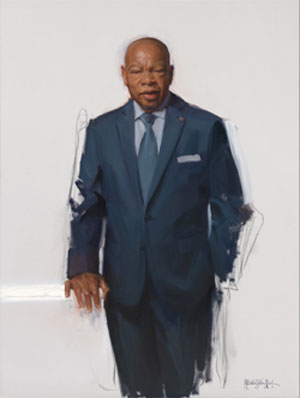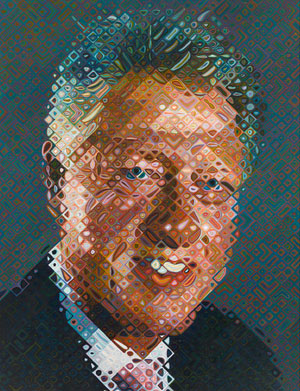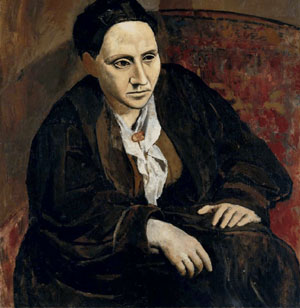|
As
the 2024
United
States
presidential
election
heats up in
this all too
hot summer
in
Washington,
DC, the
Steiny Road
Poet took
refuge in
the
Smithsonian
National
Portrait
Gallery the
weekend
following
Independence
Day. She
wanted to
see the
exhibit
entitled
“The
Struggle for
Justice”
which has
been on
permanent
display
since
February 12,
2010. Noted
in passing
is that
February 12
was the
birthday of
Abraham
Lincoln.
As Steiny
made her way
through
“The
Struggle for
Justice”
exhibit with
its
portraitures
of activists
of rights
for Native
Americans,
LGBTQ
people,
every day
workers, and
minorities
of various
races, she
came to a
memorable
portrait of
the late
John Lewis.
John Lewis,
born
February 21,
1940, was
the United
States House
Representative
for
Georgia’s
5th
congressional
district
from 1987
until his
death July
17, 2020. He
served as
the House
Democratic
Senior Chief
Deputy Whip
from 2003
until his
death. Lewis
was widely
recognized
for his work
during 17
terms in the
House of
Representatives,
receiving
the
Presidential
Medal of
Freedom in
2012. Prior
to his
congressional
service, as
a student,
he was an
activist in
the civil
rights
movement. He
was one of
the thirteen
original
Freedom
Riders who
sought
integration
of
interstate
bus
transportation.
He was a
founding
member and
the second
leader of
the Student
Nonviolent
Coordinating
Committee.
At the 1963
March on
Washington
for Jobs and
Freedom, he
was the
youngest
speaker and
was followed
by Martin
Luther King
who then
delivered
his “I
had a
dream”
speech.

Michael Shane Neal painted the portrait of John Lewis in 2020, ten years
after the “The Struggle for Justice” exhibit was mounted at the National
Portrait Gallery. This oil-on-linen painting portrays Lewis in an unfinished
look. The suit jacket sleeve of his right arm is only partially painted.
Viewers see what looks like a pencil sketch where the blue of his suit
should be filled in. His left arm looks like he was attacked. His hand is
missing; maybe it is in his pants pocket. More pencil markings seem to
indicate additional work, where the artist was unsure how he wanted the
left arm to appear. Lewis seems to be leaning against some yet unformed
structure with his right hand resting on it. And shockingly the portrait cuts
off Lewis at the knees. Yet, Lewis’ face is fully formed. He looks like he is
about to speak. Maybe to advocate to the viewer to move forward with his
unfinished work, the work that is prodded by what he called
“good trouble.”

In the next gallery is the permanent exhibition of “America’s Presidents,”
where one can find unusual portraits such as the one of Bill Clinton. Artist
Chuck Close based this oil-on-canvas work on a photograph and
emphasized the pixilation which occurs when a photo is blown up.
Currently installed on the other side of “The Struggle for Justice” is the
temporary exhibit “Brilliant Exiles: American Women in Paris, 1900-
1939,” where Pablo Picasso’s renowned portrait of Gertrude Stein hangs.
Her face comes across as a subtle mask. This painting marks Picasso’s start
of his Cubist period.

What is particularly compelling to Steiny is that the John Lewis portrait by
Michael Shane Neal is art of notable distinction that will stand out in
memory like the Chuck Close abstract of Bill Clinton and the Picasso
portrait of Gertrude Stein.
What is disturbing to Steiny, if not laughable, is that the distinctive portrait
of John Lewis stares across open gallery space into the “America’s
Presidents” exhibit where the unremarkable ink-jet photo print of Donald
Trump hangs. That portrait by Matt McClain was printed in 2020.
Hats off to the curators of the Smithsonian National Portrait Gallery who
make these exhibitions come alive.
|